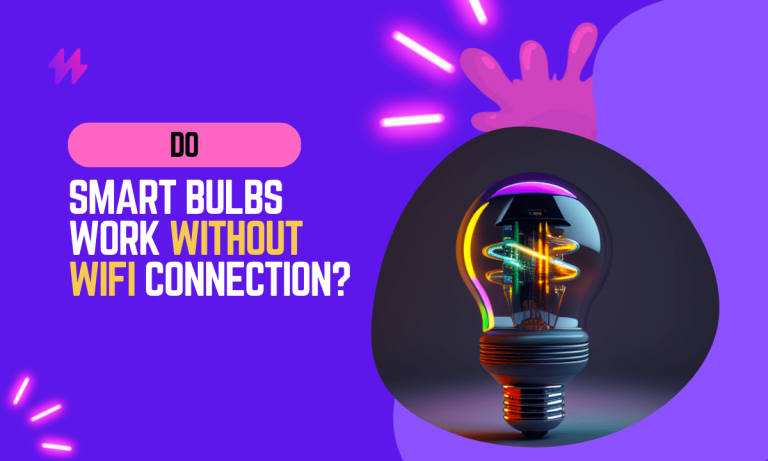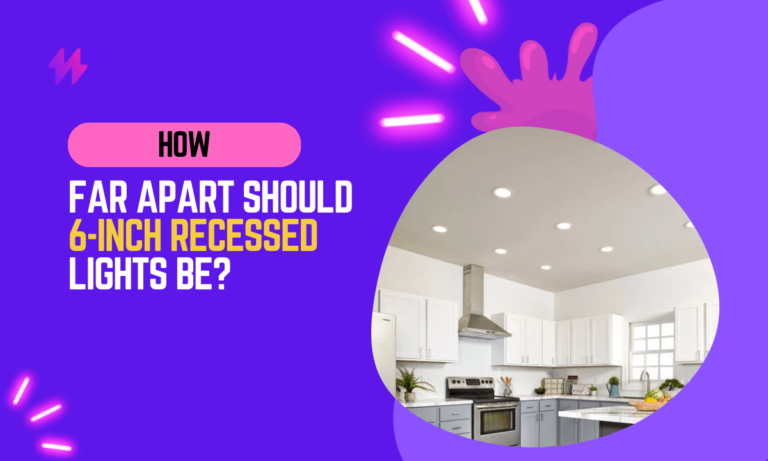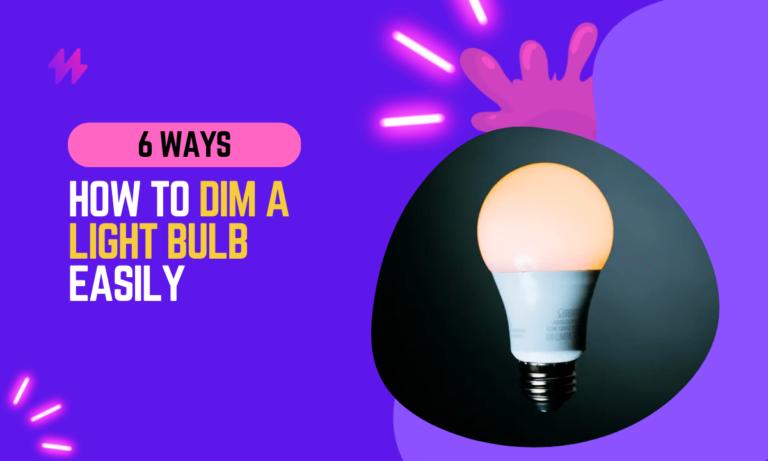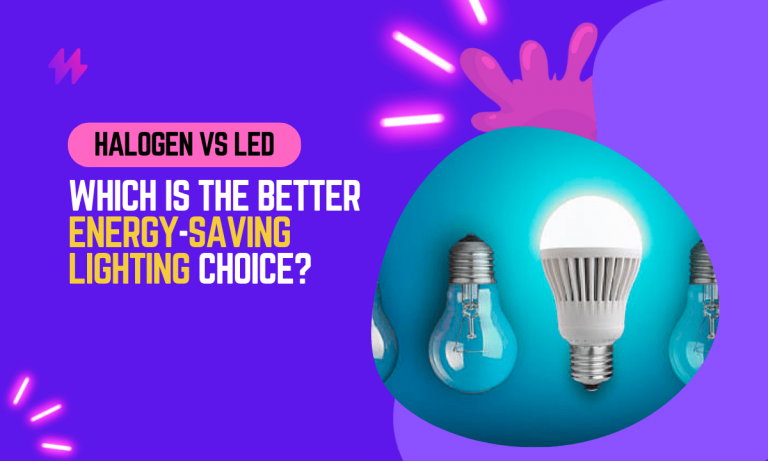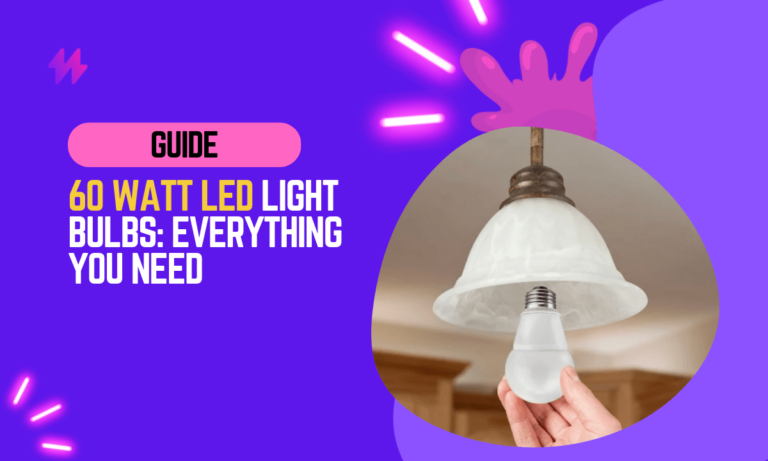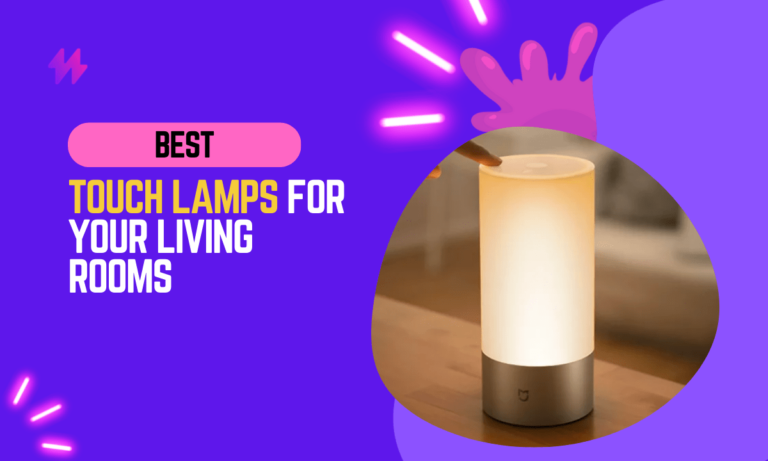Do Smart Bulbs Use Electricity When Off?
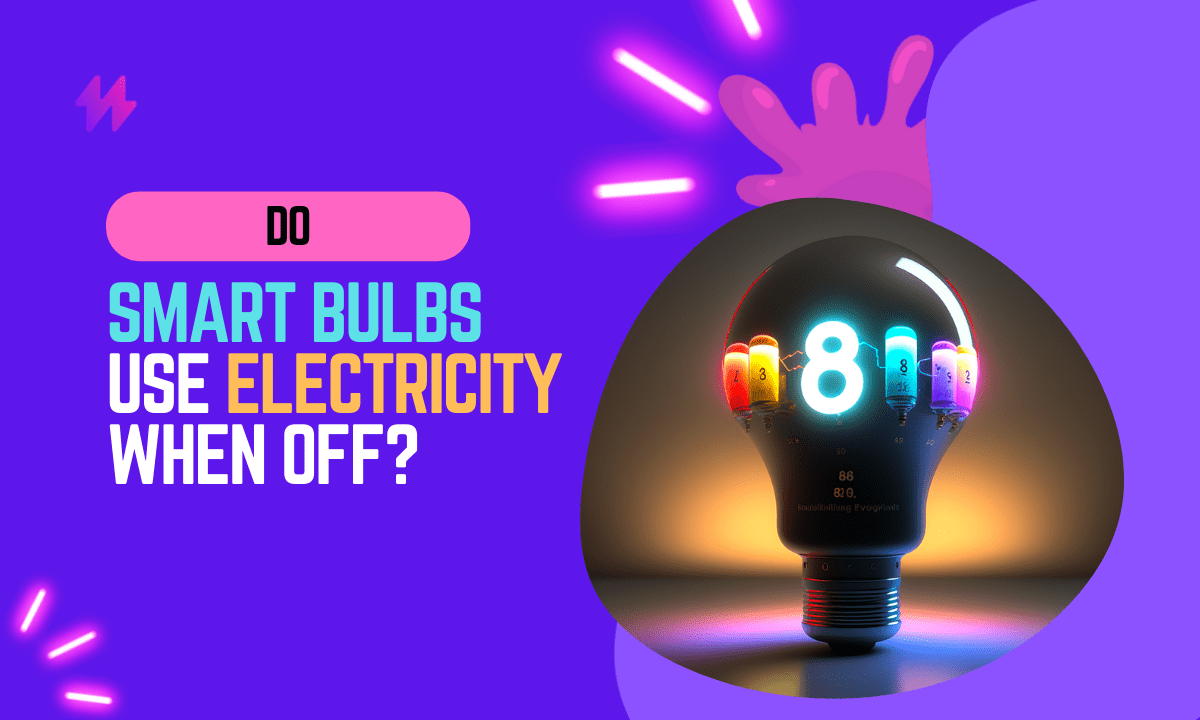
Smart bulbs have become increasingly popular in recent years due to their convenience and ability to be controlled remotely using a smartphone or voice assistant. But have you ever wondered what happens when you turn off your smart bulb? Do smart bulbs use electricity when off, or not?
In this article, we will explore the answer to this question and discuss the various factors that can affect a smart bulb’s standby power consumption. By the end of this article, you’ll have a better understanding of how smart bulbs work and how to minimize their energy usage.
Smart bulbs often retain the ability to draw power even while turned off, which can contribute to ongoing energy expenses for homeowners. To address this, integrating smart plugs can help manage the energy consumption of smart devices more efficiently, ultimately leading to significant energy savings and lower electricity bills.
Understanding How Smart Light Bulbs Work: A Comprehensive Guide

Smart bulbs are a type of light bulb that can be controlled remotely and turned on or off using a smartphone or voice assistant. They typically use Wi-Fi or Bluetooth technology to connect to your home network and receive commands from a corresponding app or device.
When you turn on a smart bulb using the app or voice assistant, it sends a signal over the Wi-Fi or Bluetooth connection to the smart bulb, activating it to produce light. When you turn off the smart bulb, the process is reversed and the light is turned off.
Smart bulbs often have additional features such as the ability to dim the light, change the color temperature, or set a schedule for the light to turn on and off automatically. These features are made possible through the use of specialized software and firmware that runs on the smart bulb itself, as well as on the device or app that is used to control it.
Smart bulbs offer the convenience of remote control and advanced features that many traditional incandescent bulbs lack. Despite their benefits, it is important to consider the power draw of smart bulbs, as they can still draw power even when they are switched off, leading to higher overall electricity usage for homeowners. Additionally, by utilizing energy-saving light bulbs along with other smart home devices, consumers can ensure that they are making energy-efficient lighting choices.
Understanding Energy Consumption: Do Smart Bulbs Use Electricity When Off?
Yes, smart bulbs do use a small amount of electricity when they are turned off. However, the amount of electricity used is typically very minimal and is not likely to have a significant impact on your energy bills.
It’s a common misconception that electronic devices, including smart bulbs, completely shut off and stop using electricity when they are turned off. In reality, many electronic devices continue to draw a small amount of power even when they are turned off, a phenomenon known as standby power consumption.
Standby power consumption refers to the energy that an electronic device uses when it is turned off or in a low-power state, but still connected to a power source. Standby power is necessary for certain functions, such as maintaining the device’s internal clock or allowing it to be turned on or off remotely.

One research by ScienceDirect found that a smart LED bulb that was turned off used about 0.2 watts of power. This is a very small amount of electricity compared to the approximately 60 watts that a traditional incandescent bulb uses when it is turned on.
It’s worth noting that the amount of electricity used by a smart bulb when it is turned off can vary depending on the specific model and features of the bulb. Some smart bulbs may use slightly more or less electricity when they are turned off.
Learn more: How to Sync LED lights with Music
Smart bulbs can be an excellent addition to any smart home system, offering a blend of convenience and advanced lighting features. However, it’s crucial for consumers to remain aware of how smart bulbs can still draw power even when they are switched off, as this could influence their overall energy costs. Additionally, incorporating energy-saving light bulbs and smart light options into the home can greatly enhance energy efficiency while reducing waste electricity.
Effective Strategies for Reducing Energy Consumption of Smart Bulbs
There are several steps you can take to minimize the energy usage of your smart bulbs:
To minimize energy usage, homeowners can consider switching to energy-saving light bulbs, such as LED or CFL options, which provide the same illumination as standard incandescent bulbs while consuming less power. By incorporating smart home sensors and smart switches, users can better manage their smart bulb needs and reduce the power drain from their light fixtures, ultimately achieving greater energy efficiency.
Optimizing Energy Use with Smart Bulbs: Use Energy-Efficient Bulbs
Look for smart bulbs that have an Energy Star rating or are advertised as energy-efficient. These bulbs are designed to use less energy and have a lower standby power consumption.
The use of smart bulbs with Energy Star ratings can dramatically reduce energy bills due to their lower energy consumption compared to traditional incandescent bulbs. It’s also beneficial to pair these smart light bulbs with energy-saving light bulbs like LED and CFL options for optimal energy efficiency, helping to save on power costs throughout the home.
Optimizing Energy Savings: Unplugging or Utilizing a Power Strip
When you’re not using your smart bulbs, consider unplugging them or using a power strip with an on/off switch to easily cut power to multiple devices at once. This can help reduce standby power consumption.
To optimize energy consumption in a smart home, it’s essential to incorporate energy-saving light bulbs such as LED or CFL options, which can help to reduce energy costs significantly. By ensuring that the electrical wiring and fixtures are compatible with these newer technologies, homeowners can achieve both effective light quality and energy efficiency in their lighting solutions.
Maximizing Energy Efficiency: Use Smart Scheduling for Your Smart Bulbs
Many smart bulbs come with scheduling features that allow you to set the bulbs to turn on and off automatically at certain times. This can help reduce energy usage by ensuring that the bulbs are only on when needed.
Smart bulbs present a modern solution for transforming ordinary spaces into smart homes with their extensive capabilities such as scheduling and customizable settings. As homeowners explore energy-efficient lighting options, integrating energy-saving light bulbs like LED or CFL alongside smart bulbs ensures optimal energy savings while minimizing electricity rate impacts on home energy costs.
Maximizing Smart Bulb Efficiency: Use Dimming and Color Temperature Features
Some smart bulbs allow you to adjust the brightness and color temperature of the light. Using these features can help reduce energy usage by allowing you to use less light when it’s not needed.
Smart bulbs allow for customizable brightness and color adjustments, enhancing user experience and efficiency. By using energy-saving light bulbs such as LED and CFL alternatives, homeowners can significantly reduce their overall power bills while taking advantage of smart technologies.
Ensure Smart Bulbs are Updated: Keep Software and Firmware Up to Date
Regularly updating the software and firmware on your smart bulbs can help improve their energy efficiency and reduce standby power consumption. Check with the manufacturer for information on how to update your smart bulbs.
By following these tips, you can help reduce the energy usage of your smart bulbs and make a positive impact on the environment.
To maximize the energy-saving results of smart bulbs, homeowners should regularly update the smart light firmware and make use of energy-efficient light technologies. Taking advantage of new bulbs and incorporating smart controls can significantly enhance the overall performance of smart lights, benefiting both energy usage and lighting experience.
Final Thoughts on Smart Bulbs: Energy Efficiency and Usage
In conclusion, the question of whether smart bulbs use electricity when turned off is essential for consumers looking to optimize energy efficiency in their homes. While smart bulbs offer advanced features such as remote control, scheduling, and voice command capabilities, they do require a small amount of electricity to maintain their connectivity and responsiveness even when not actively illuminating. This “vampire” power, also known as standby power, enables the smart bulb to receive signals from a network connection, such as Wi-Fi or Bluetooth, allowing it to react to user commands instantaneously. Although the amount of power consumed in standby mode is relatively low, typically a few watts, it can add up over time and contribute to overall household energy usage, especially when multiple smart bulbs are installed.
Furthermore, understanding and managing the standby power consumption of smart bulbs can lead to more effective energy use without sacrificing the convenience and benefits of smart home technology. Consumers can look for smart bulbs that are specifically designed to minimize energy use when off, or they can use smart home hubs that centralize connections and potentially reduce the need for each bulb to maintain individual network connectivity. Additionally, integrating smart power strips or energy monitors can provide homeowners with precise control and real-time data about their energy consumption, helping them make informed decisions about when and how to use their smart lighting to best effect. By considering these factors, users can enjoy the full benefits of smart bulbs while also aligning with energy-saving practices that reduce costs and environmental impact.
Do Smart Bulbs Use Electricity When Off | Exploring Smart Bulb Functionality
Smart bulbs, particularly those utilizing light-emitting diode (LED) technology, are designed for energy efficiency. However, many consumers wonder, “Do smart bulbs use electricity when off?” The answer is nuanced. While traditional incandescent bulbs and CFL bulbs consume no power when switched off, smart bulbs like the top-rated Philips models often continue to draw a small amount of power, even in a low-power sleep state. This is due to their need to maintain connectivity with smart home systems and respond to commands from smart home assistants. As an energy-efficient solution, good smart bulbs can help reduce overall energy consumption, but users should be aware of this standby power usage. Factors such as the specific model and smart bulb manufacturers can influence how much electricity these automated lighting solutions consume. Consequently, understanding the energy use of different light technologies is essential for making informed lighting choices within your connected home.
Do Smart Bulbs Use Electricity When Off | The Technology Behind Smart Bulbs
Smart bulbs, designed with energy-saving technology, offer a modern alternative to traditional incandescent bulbs. While these energy saver light bulbs come with various benefits, such as adjustable brightness settings and smart app control, it is crucial to understand their energy consumption patterns. Do smart bulbs use electricity when off? The answer is yes; they use electricity even when they’re turned off. This occurs because typical smart bulbs require a small amount of power to remain connected to your home network and respond to signals from smart assistants or smart home apps.
The technology behind smart home lights, including LED light bulbs and CFL light bulbs, relies on smart-home-specific communication technologies that enable them to stay in standby mode. Even old-fashioned bulbs, such as classic incandescent bulbs, are not equipped with such features. The little power consumed by smart bulbs allows them to maintain connectivity, but this results in ongoing energy use. For those concerned about light energy savings, understanding the power supply demands of current bulbs is essential, especially when comparing them to old bulbs that function solely when switched on.
How Smart Bulbs Connect to Your Home Network
Smart bulbs connect to your home network using Wi-Fi or Bluetooth technology. This allows them to communicate with smartphones and smart home hubs, enabling users to control their lighting remotely. By utilizing energy-saving light bulbs such as LED bulbs, users can maximize brightness levels and efficiency while minimizing electricity costs. Many smart light options come with features like dimmable settings and color-changing capabilities, making them more versatile than traditional bulbs or comparable incandescent bulbs. Smart home companies have developed these products to function seamlessly as part of an integrated smart home era.
Installation of smart lights usually requires only a few minutes and does not involve complicated setups. Users typically screw in the new lightbulb into an electrical outlet and pair it with a smart device. Various types of lightbulbs, including Edison-style bulbs and smart flood lights, easily fit into existing fixtures. Smart light uses encompass tasks like adjusting light temperature and tracking energy savings, providing advantages over ordinary appliances. Understanding how these connected appliances work sheds light on the actual bulbs’ power consumption, helping consumers differentiate between different light bulbs and make informed choices regarding their lighting needs.
Investigating Energy Use When Smart Bulbs Are Off
Understanding whether smart bulbs consume energy when off raises an important question: do smart bulbs use electricity when off? The answer largely depends on their design and features. Unlike traditional incandescent light bulbs that typically use 40-60 watts of power, smart energy saving light bulbs have various functionalities that may lead to standby power consumption. Even in an off state, smart lights work to maintain connections with internet-connected light networks and respond to voice-activated commands. While the power they consume is generally minimal, often just a few watts, this can add up across several lightbulbs. For example, color-changing lights and smart LEDs may require a necessary power draw for their advanced features like smart communication methods and energy tracking. Consequently, despite their benefits, including light savings and extended lifespan, smart lamp costs can still reflect this subtle energy use, especially in homes with multiple wired switches or ornate light fixtures. Switching to daylight spectrum or cool light color settings, paired with sensors, can also influence overall energy consumption, highlighting the importance of managing how often these smart gadgets are used, even when the old switch is turned off.
Standby Power Consumption Explained
Smart bulbs, including popular options like hue lights and a-shaped bulbs, often have standby power consumption, even when they are turned off. This phenomenon raises the question: Do smart bulbs use electricity when off? Many smart bulb models can consume a small amount of electricity to maintain connectivity with your home network and respond to voice commands. While a typical smart bulb consumes about 15-20 watts during use, the standby mode requires significantly less power, typically measured in milliwatts. This means users should consider the smart bulb benefits against how often they truly need the technology when the bulbs are not in use.
The impact of this standby consumption depends on several factors, such as current electricity rates and the type of hardware a smart light is paired with. For example, outdoor lights, light strips, and wide-angled lighting setups may draw more or less power based on how they interact with hardware switches and paired sensors. While the convenience of voice-activated lights can justify some energy costs, homeowners should evaluate their wall switch needs and overall smart bulb lasts to determine if switching to traditional lighting could be more economical. Understanding the balance of smart technology and energy savings is essential for today’s environmentally conscious consumers.
Factors That Influence Energy Use
The question of whether smart bulbs consume energy when they are off often depends on various factors. The design of the smart bulb itself can play a significant role; those with a bulbous shape may vary in standby consumption. A smart light connected to a home network typically requires a minimum amount of power to maintain its connection, resulting in some energy use even in the off state. Users should consider how smart light costs can accumulate over time, especially if multiple bulbs are in use.
Another important element influencing energy usage is the control method employed, such as the light switch. If a smart bulb is powered down completely through a traditional wall switch, it stops consuming energy. Contrarily, bulbs left connected to a power source will continue to draw standby power. Understanding these factors can help consumers make informed decisions about their lighting options and assess whether the convenience of smart bulbs outweighs the potential energy costs associated with their operation.
Alternatives to Smart Bulbs
Traditional lighting options offer a practical alternative to smart bulbs for those concerned about energy consumption. Many consumers often wonder, “Do smart bulbs use electricity when off?” This question highlights the importance of understanding how different lighting technologies function. Traditional incandescent or LED bulbs do not have the same standby power consumption issues that smart bulbs may present. By exploring other lighting forms, like solar-powered solutions, individuals can leverage solar expertise for even greater energy savings. As awareness grows around energy efficiency and electrical costs, the appeal of conventional lighting continues to shine brightly.
Benefits of Traditional Lighting Options
Traditional lighting options, such as incandescent and fluorescent bulbs, have been a reliable choice for many households. Unlike smart bulbs, which may draw some power even when not in use, these conventional bulbs typically do not consume electricity when turned off. This brings an important consideration: do smart bulbs use electricity when off? The answer often leads consumers to rethink their lighting choices in terms of practicality and energy efficiency.
While smart bulbs offer advanced features like remote access and customizable settings, traditional bulbs shine in their simplicity and low maintenance. Users can save on electricity costs, especially since many incandescent and LED options are affordably priced and widely available. Understanding the question of whether smart bulbs consume energy in their off state helps highlight the distinct advantages of sticking with tried-and-true lighting solutions.
Comparing Energy Efficiency: Smart Bulbs vs LED
Smart bulbs offer a sophisticated alternative to traditional LED lighting, but their energy use raises questions for many consumers. A common concern is, “Do smart bulbs use electricity when off?” While these bulbs are designed for efficiency, they remain connected to your home network, which can lead to minimal energy consumption even when not actively in use. This standby power consumption is often minimal but important to consider when evaluating overall energy efficiency.
LED bulbs, on the other hand, generally have lower energy consumption and do not consume power when turned off. They provide efficient lighting without the additional energy draw associated with smart features. While smart bulbs allow for greater control and customization, the question remains: “Do smart bulbs use electricity when off?” This impacts their overall efficiency compared to standard LED options, which may be the better choice for those focused solely on reducing energy costs.

